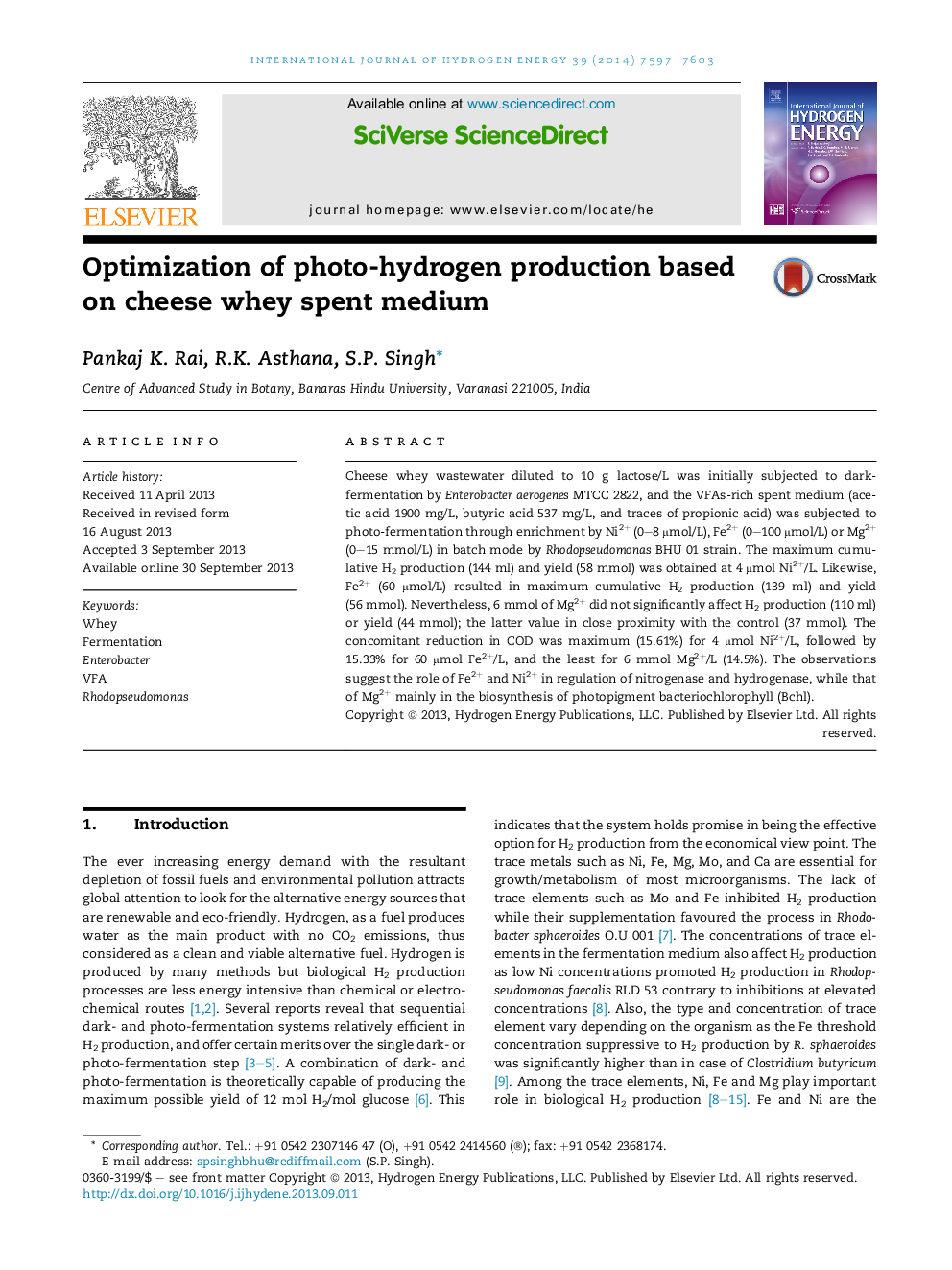| Article ID | Journal | Published Year | Pages | File Type |
|---|---|---|---|---|
| 1272738 | International Journal of Hydrogen Energy | 2014 | 7 Pages |
•Cheese whey spent medium was used for H2 production.•Effect of Ni2+, Fe2+ and Mg2+ on photo-H2 production was investigated.•Ni2+ was most effective in H2 production followed by Fe2+ and Mg2+.
Cheese whey wastewater diluted to 10 g lactose/L was initially subjected to dark-fermentation by Enterobacter aerogenes MTCC 2822, and the VFAs-rich spent medium (acetic acid 1900 mg/L, butyric acid 537 mg/L, and traces of propionic acid) was subjected to photo-fermentation through enrichment by Ni2+ (0–8 μmol/L), Fe2+ (0–100 μmol/L) or Mg2+ (0–15 mmol/L) in batch mode by Rhodopseudomonas BHU 01 strain. The maximum cumulative H2 production (144 ml) and yield (58 mmol) was obtained at 4 μmol Ni2+/L. Likewise, Fe2+ (60 μmol/L) resulted in maximum cumulative H2 production (139 ml) and yield (56 mmol). Nevertheless, 6 mmol of Mg2+ did not significantly affect H2 production (110 ml) or yield (44 mmol); the latter value in close proximity with the control (37 mmol). The concomitant reduction in COD was maximum (15.61%) for 4 μmol Ni2+/L, followed by 15.33% for 60 μmol Fe2+/L, and the least for 6 mmol Mg2+/L (14.5%). The observations suggest the role of Fe2+ and Ni2+ in regulation of nitrogenase and hydrogenase, while that of Mg2+ mainly in the biosynthesis of photopigment bacteriochlorophyll (Bchl).
